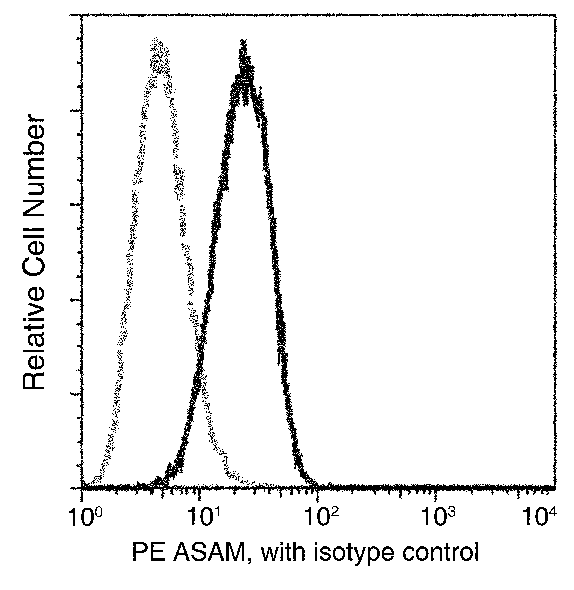-
Product Name
Anti-CLMP antibody
- Documents
-
Description
Mouse Monoclonal to Human CLMP
-
Tested applications
FCM
-
Species reactivity
Human ASAM / CLMP
-
Alternative names
ACAM antibody; ASAM antibody; CSBM antibody; CSBS antibody; ACAM antibody; ASP5 antibody; AW557819 antibody; 9030425E11Rik antibody; ACAM antibody; ASAM antibody; CLMP antibody; FLJ22415 antibody
- Immunogen
-
Isotype
Mouse IgG1
-
Preparation
This antibody was produced from a hybridoma resulting from the fusion of a mouse myeloma with B cells obtained from a mouse immunized with purified, recombinant Human ASAM / CLMP and conjugated with PE under optimum conditions, the unreacted PE was removed.
-
Clonality
Monoclonal
-
Formulation
Aqueous solution containing 0.5% BSA and 0.09% sodium azide
-
Storage instructions
This antibody is stable for 12 months from date of receipt when stored at 2℃-8℃. Protected from prolonged exposure to light. Do not freeze !
Sodium azide is toxic to cells and should be disposed of properly. Flush with large volumes of water during disposal. -
Applications
FCM
-
Validations

ASAM / CLMP Antibody, Mouse MAb, Flow Cytometry
-
Background
Adipocyte-specific adhesion molecule (ASAM), also known as ACAM and CLMP, is a type I transmembrane protein and a member of the CTX (cortical thymocyte marker in Xenopus) family within the immunoglobulin superfamily. ASAM protein is highly expressed in the small intestine and placenta, and is found at intermediate levels in the heart, skeletal muscle, colon, spleen, kidney, and lung, and appears in low levels in the liver and peripheral blood leukocytes as well. ASAM is a transmembrane component of tight junctions in epithelial cells that can mediate cell aggregation and regulate transepithelial resistance across polarized epithelial cells. In addition, its expression is strongly correlated with white adipose tissue (WAT) mass of human and rodents with obesity.
Related Products / Services
Please note: All products are "FOR RESEARCH USE ONLY AND ARE NOT INTENDED FOR DIAGNOSTIC OR THERAPEUTIC USE"
